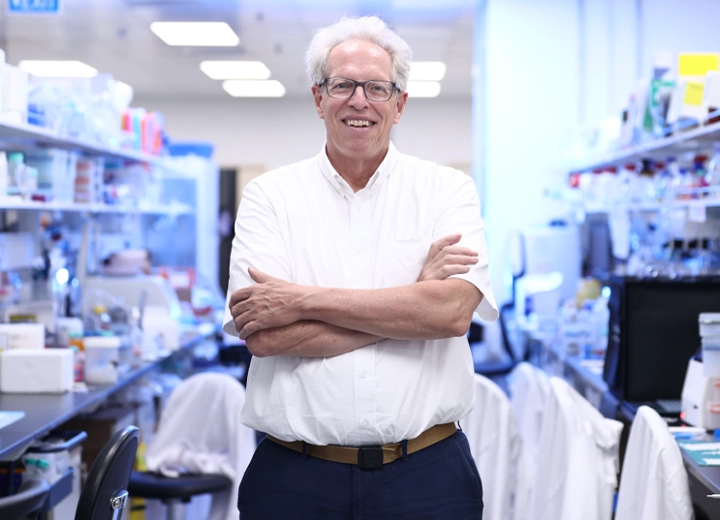In the early days of building BioChromatographix International (BCI), I stood at a familiar crossroads – one I have seen many biotech innovators reach. We had something powerful in our hands: a scientific breakthrough with the potential to shift how virus purification was done. The data was strong. The technology, sound. But the question that kept me up at night wasn’t about the science, it was about the market.
Would anyone use it? Would it fit into the complex realities of biomanufacturing? Could we scale it in GMP environment and would procurement teams see its value?
Far too often in early-stage biotech, science is pursued in a vacuum—without anchoring it to the needs, constraints, and realities of the market. That’s a lesson I learned not in a single moment, but over years of navigating the trenches of pharmaceutical commercialization. It is what shaped how we built BCI from the ground up – not just to innovate but to resonate.
My name is Chervee Ho, CEO and Co-Founder of BioChromatographix International. I was born and raised in Malaysia and later moved to Singapore to pursue my career in the Life Sciences industry. After graduation, I worked in several multinational pharmaceutical companies, where I learned to bridge science with market commercialization strategy. That experience grounded me, but it was the desire to make a deeper impact that led me to co-found BCI.
Startups are born from bold dreams and mine was no different. I knew that if I wanted to see more science make it into the hands of the people who need it, I couldn’t just support innovation from the sidelines—I had to be in the arena. Building a company from scratch is a leap of faith. It’s risky, uncertain, and demanding. But it’s also incredibly meaningful. I dared greatly because I believed that science with purpose can and must change the world.
More than that, I wanted to build something bigger than myself. A place where diverse skills and perspectives come together, where everyone feels part of a larger mission, and where talent isn’t just hired—it’s cultivated. I believe in growing the people we bring into BCI, helping them stretch beyond what they thought possible. Because when individuals grow, the company grows with them.
This article is a reflection of that journey. It’s about the lessons I’ve learned, the people I’ve worked with, and the belief that biotech success doesn’t come from science alone—it comes from commercial clarity, courageous decisions, and building teams that dare to dream, build, and lead.
Where Scientific Ingenuity Meets Market Reality
Scientific founders in bioprocessing often excel at solving deep technical problems. They know how to build, test, and validate cutting-edge technologies like monolithic chromatography columns. But commercializing these technologies is a different challenge altogether.
Time and again, I’ve seen brilliant scientists design elegant solutions for purifying plasmids, AAVs, or exosomes—only to face silence from the market. Not because the products lacked innovation, but because they lacked positioning. Without a commercialization strategy, even the most advanced tools struggle to move beyond the lab bench.
This disconnect is more common than most realize. In a field driven by data and precision, commercial development is often treated as a secondary function—something to address later. But by then, it’s often too late.
Commercial Thinking Isn’t Just Sales—It’s Strategic Direction
Commercial leadership isn’t about handing out brochures or setting price points. It’s about ensuring the product is built for a real need, fits within existing workflows, and delivers value that resonates across technical and procurement teams alike. It involves:
- Understanding competitive landscapes and market entry barriers
- Anticipating customer pain points and operational requirements
- Shaping product features with adoption and scalability in mind
- Building compelling value propositions that speak to stakeholders at every level
At BCI, these were the questions we asked from day one. Not as an afterthought, but as a guiding principle.
Building with the End User in Mind
When we began developing our Next-Generation Monolithic Chromatography Media, we knew we weren’t just building a product—we were crafting an experience. We created AXISFLOW™, our flagship product portfolio designed to set a new standard in virus purification. AXISFLOW™ wasn’t just about advanced chemistry—it was about commercial usability, designed to meet the demanding needs of pDNA, AAV, LV, mRNA, VLP, bacteriophage and exosome purification at scale.
That meant thinking about the small things that often go unnoticed: the clarity of our documentation, the compatibility with downstream workflows, the design of our packaging, and the training materials customers would need.
We also factored in the critical requirements of GMP manufacturing environments. From the robustness of our materials to the reproducibility of our column performance, everything was designed to integrate seamlessly into highly regulated bioprocessing settings. That foresight helps de-risk our technology for customers navigating compliance demands.
We knew that designing for GMP isn’t just about meeting standards—it’s about building trust. Collaborators need confidence that your innovation can scale safely, reliably, and in compliance with regulatory expectations.
Choosing the right collaborators is so essential. Whether it’s pilot facilities, beta testers, or co-development partners, working with strategic allies who understand both science and commercialization makes all the difference. Collaboration isn’t just about access—it’s about alignment. Are you solving the same problems? Do you share a vision for impact? Are roles and expectations clear from the start? Having this clarity enables smoother execution, better problem-solving, and stronger relationships.
Collaboration also includes working alongside partners who bring different expertise to the table. Scientists, marketers, regulatory experts, engineers, and customer-facing teams each see different angles of the same challenge. Leveraging that diversity requires thoughtful communication, mutual respect, and a commitment to a shared goal.
We also invested early in intellectual property—filing patents that would not only protect our innovations, but signal to partners and investors that we’re serious about long-term value. IP isn’t just a legal asset—it’s a strategic one. It gives you leverage in partnerships, safeguards your differentiation, and reinforces your credibility in the eyes of stakeholders.
And equally important choosing the right people to join your team. Having commercially minded scientists, adaptable engineers, and business development professionals from the outset ensures you’re building with purpose. A great idea needs great execution—and that means having a team that understands both science and market dynamics.
These decisions—on manufacturing, collaboration, IP, and team—don’t just enhance usability. They accelerate adoption. And in an industry where every delay can impact a customer’s production timeline, that speed matters.
The Power of Being Commercially Prepared
Today’s bioprocessing landscape is evolving rapidly. The rise of gene therapies, mRNA platforms, and personalized medicine is shifting how biologics are produced—and purified. Speed, scalability, and regulatory readiness are now as critical as performance.
In this dynamic environment, startups must think beyond product innovation. They need a commercial mindset that informs how the product is designed, how it is tested, how it is introduced to the market, and how it will grow.
Being commercially prepared means anticipating customer requirements early, aligning with purchasing and operational expectations, and being ready to scale manufacturing to meet demand. It’s about having a clear roadmap, aligning your product vision with operational feasibility, and equipping your team to navigate complexity from day one.
Startups that embed commercial readiness into their DNA stand out. They build solutions that are easier to adopt, easier to trust, and ultimately, easier to scale. And that preparation opens doors to better partnerships, faster revenue, and stronger investor confidence.
It’s not enough to ask, “Does it work?” The real question is, “Will customers choose it—and keep choosing it?”
Lessons from Experience
My background in pharmaceutical commercialization gave me a front-row seat to what happens when promising therapies meet market complexity. I’ve worked on cross-border launches, market access strategies, and lifecycle management plans. And I’ve seen how even the best innovations can falter without a commercialization plan.
Those experiences shaped how we built BCI. My co-founder, Scott Wheelwright, Chairman & CTO brought decades of manufacturing and regulatory expertise. I brought the market lens—asking what the customer journey would look like, how to position ourselves credibly, and how to scale sustainably. It was this blend of science and strategy that became our foundation.
The Strength of Diverse Leadership
Being a female co-founder in biotech has given me a unique vantage point. There’s something powerful about building in spaces where you’re not always expected—and using that perspective to bring empathy, creativity, and resilience into leadership.
I’ve always believed that innovation thrives when diverse voices are at the table. Commercial leadership, too, benefits from this diversity—of thought, background, and approach. It pushes us to see gaps others miss, and to build solutions that reflect the complexity of the world we serve.
Embedding Commercial Thinking: A Timely Reminder for Biotech Founders
If you’re a scientist building a biotech startup, here’s what I encourage you to consider:
- Don’t treat commercialization as a phase. Make it a mindset.
- Partner with someone who brings commercial depth—not just to sell, but to shape.
- Choose your collaborators wisely—and be strategic about how you work together.
- Select a founding team that brings balanced perspectives in science, operations, and commercial execution.
- Invite market conversations early. The sooner you engage real users, the better your product will become.
- Protect your innovation with a strong IP strategy. It’s part of your commercial foundation.
And if you’re someone who loves the business side of biotech—strategy, operations, customer engagement—know that your skills are not only relevant, but essential. The future of our industry depends on it.
Turning Innovation Into Impact
At BCI, we set out to do more than build Next-Generation Monolith Chromatography Media. We set out to build a company that could navigate both the science and the system—where innovation meets implementation.
Our AXISFLOW™ portfolio is a reflection of that mission—engineered for efficiency, built with purpose, and ready for the real world of biomanufacturing.
As someone who enjoys writing, reading, sharing, and growing with others in the field, I hope this piece adds perspective to your journey. Commercial thinking isn’t a barrier to science—it’s what helps science thrive beyond the bench.
Let’s bring more ideas to market by building commercial strength from the very beginning.


